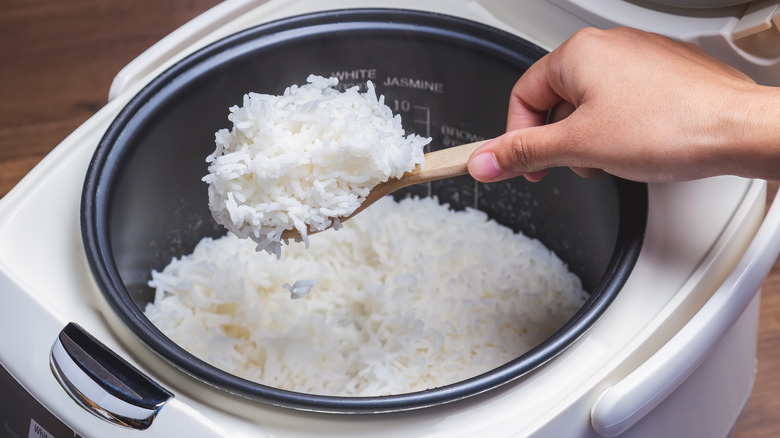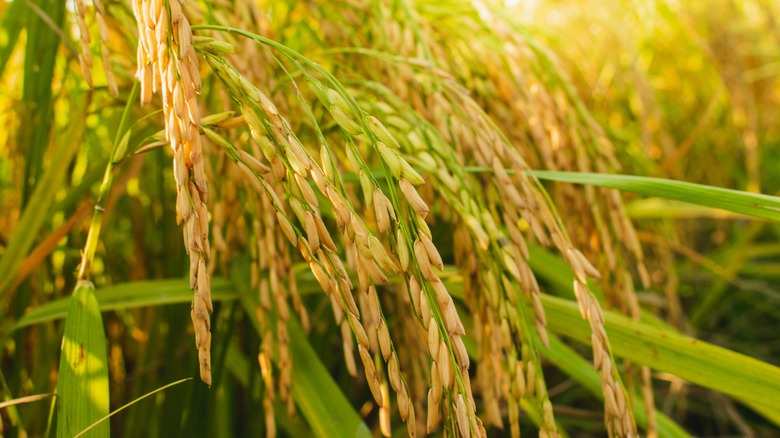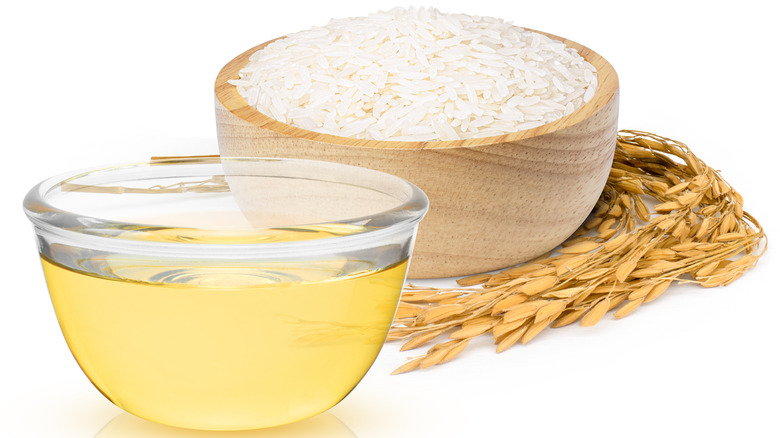The Only Ingredient You Need To Stop Rice From Sticking
There's nothing simpler than cooking a quick and easy bowl of rice, right? Well, that isn't always the case. It often comes out a little gummy or mushy after whipping up a batch of it on the stovetop, or worse: It sticks to the bottom of the pan.
Don't worry; you're not alone in this. Nevertheless, no one's ever happy when it does happen, especially when this means there'll be another pot to soak and scrape. Fortunately, there are some ways to avoid this, and the most straightforward one is to include a specific ingredient that practically everybody has in their kitchen: oil.
It's a natural lubricant, so the most uncomplicated method used to avoid sticking is including a bit of it when cooking rice, especially in conjunction with a non-stick pot. Moreover, there are several options to choose from, which vary in terms of adding flavor. For instance, although allergens have to be taken into account, peanut oil can be a great addition to rice if Thai cuisine is on the menu. The same can be said about grapeseed or olive oil when thinking about Mediterranean dishes, since both offer a touch of fruitiness and herbiness to the finished product.
The ideal amount of water varies
Of course, you're also going to need water to actually cook the rice, and the amount you use will similarly affect its stickiness. Everyone knows there are many types of rice to choose from: brown, Jasmine, red, Arborio, and so on. However, not everybody knows that these varieties require different water ratios.
For example, 1 cup of long-grain white rice needs 2 cups of water. On the other hand, an equal amount of Jasmine demands 1 ½ cups of liquid, while basmati uses 1 ¾ cups. Still, best practice suggests always looking at the product's packaging, which will usually tell you the amount of water and cooking time recommended for each kind.
Nevertheless, these instructions may be approximations and might need some adjusting. As Chef JJ Johnson told Insider, if there's not enough liquid or even too much of it, then you'll quickly have a problem on your hands. As a result, Johnson recommends "the finger trick," which entails touching your index fingertip to the pot's bottom and then filling the pot with water to where your digit's first knuckle is. If there's too much rice for your knuckle to even be visible under those conditions, then just touch your fingertip instead to the top of the rice and then measure from there (still filling up to the now-higher knuckle).
A little rinsing and oil goes a long way
The starch content must also be considered. Usually, rice shifts around in transit, and grains chafe against each other, which creates a starchy film that coats them. As a result, it's essential to rinse the stuff before cooking it.
If this step is skipped, combining water with excess starch will cause the rice to become clumpy and sticky. The easiest way to prevent this is to bathe the grains in a bowl and swirl them around with your fingers before filling the pot. The water will be cloudy at first, but as the liquid is strained and the rice is re-rinsed, the liquid will become clearer — a sign the rice is clean.
Additionally, although a rice cooker isn't strictly necessary, it removes much of the guesswork. It helps discourage mistakes you're making when cooking rice, like not letting the grains rest a bit after warming up. As a result, the process becomes less troublesome, especially when adding oil to the mix.
You want to coat the bottom of the pot with oil before putting in the rice. If you're feeling a little adventurous, you could mix oil into the rice itself. Make sure to stir well. This provides an even coat on all the grains, which should prevent random sticky spots. Whatever oil is used, this will create a greater chance of avoiding that dreaded layer of crunchy bits stuck at the bottom when it's time to grab a bowl.


